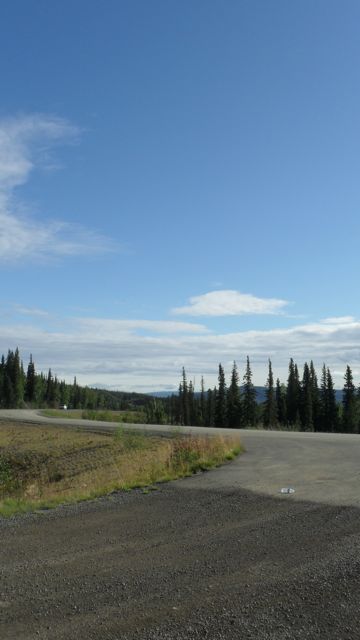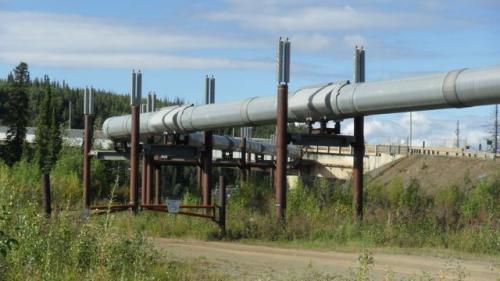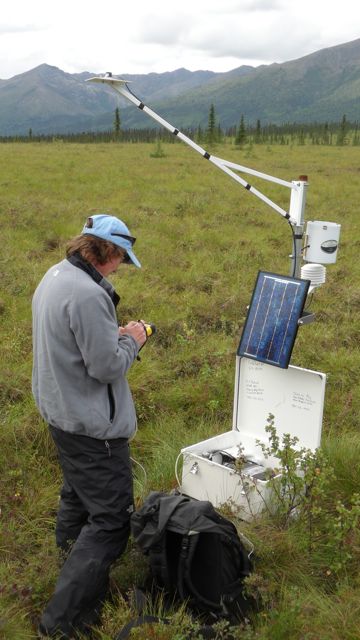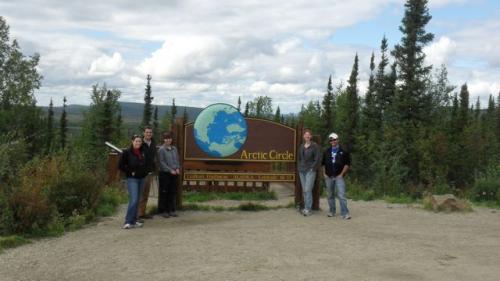Apologies to all for the delayed entry. We were experiencing a bit of internet difficulty after arriving at Prudhoe Bay late Sunday, August 8th. I'll catch you up on the journey, and let some pictures help tell the story…

Cathy, Anna, Kelsey, Elliot and I left Fairbanks about 8:30 am aboard the F-350 Super Duty. The Dalton Highway (also known as the Haul Road and Alaska Route 11) is a 414 mile paved and gravel road beginning at its intersection with the Elliot Highway (Alaska Route 2) near Livengood, AK in the South, and ending at Deadhorse next to the Prudhoe Bay oil fields and the Arctic Ocean. Incidentally, this is the same fabled path that daring drivers face on the History Channel's series Ice Road Truckers... The highway was constructed in 1974 to support the Trans-Alaska Pipleline, which carries oil from Prudhoe Bay south to Valdez, Alaska. The road travels over the Yukon River and through the Brooks Range, passing from taiga (forest filled primarily with deciduous trees) to tundra (where short growing seasons prevent trees from growing) as one heads North through the mountains.

In Fairbanks and the southern part of the Dalton Highway, roads lie on discontinuous permafrost. This means that parts of the ground of underline with soil remaining frozen for two years or longer, but patches of this frozen, subterranean soil are checker-boarded. Continuous permafrost, where over 90% of the terrain lies on soil frozen for two years or longer, begins to dominate the landscape as one travels north. The active layer, which occurs between the earth surface and the permafrost layer, freezes and thaws annually, causing shifting in the ground. This is a huge potential problem for structures lying on top of the Earth. Dalton Highway engineers foresaw the issue by building the road up onto large gravel pads. The gravel makes road banks very steep and potentially hazardous, but helps insulate the frozen ground beneath.
On the journey up, the team stopped at two of Cathy Seybold’s soil monitoring sites: one at mile marker 170, and one outside the “Greater Metropolitan Area of Coldfoot, Alaska” (Coldfoot, one of three places to refuel north of the Elliot Highway, has a population of 13 according to the 2000 census). At these sites, Cathy checked the soil temperature and moisture content, as well as precipitation levels, solar radiation, and air temperature readings. Temperatures of the soil at various depths help determine where permafrost begins (and how deep the active layer exists) below the ground. Cathy puts the “CircumpolarLocated or found within the Earth’s polar regions.” in “Long-term CircumpolarLocated or found within the Earth’s polar regions. PermafrostPermanently frozen ground. Reporting” as a handful of her sites are in Antarctica.

Aside from Cathy’s sites, we stopped periodically for a few unique attractions: the crossing of the Yukon and the Arctic Circle, an interagency visitor’s center near Coldfoot, a unique geologic feature known as Finger Mountain. We paused at Toolik research station for dinner and refueling (which we will return to later in the week) and arrived at Prudhoe Bay around 12:30 am. While the sun set around 11 pm, and heavy fog set in north of Toolik, the sky never went dark.

More photos from the highway and tales from Prudhoe Bay coming later today...


Comments